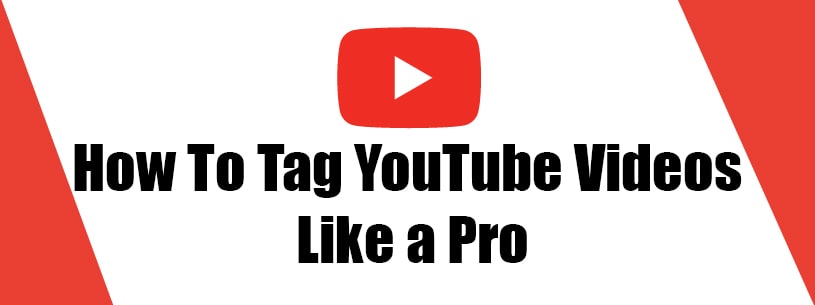- HOME
- CHECKOUT / CART
- LOGIN / REGISTER
- LINK BUILDING
- SEO
- SEO Packages
- Small Business SEO
- Corporate Enterprise SEO
- eCommerce SEO
- Local SEO Services
- SEO Case Studies
- Google Maps Marketing
- Google My Business Management
- Unnatural Links Penalty Recovery
- Shopify SEO
- SEO Consulting
- SEO Reseller Program
- SEO Affiliate Program
- Video SEO Optimization
- WordPress SEO
- WIX SEO Services
- OTHER SERVICES
- RESOURCES
- ABOUT
- About Us
- Why Us
- Testimonials
- INDUSTRIES
- Cannabis CBD Marketing and SEO
- Carpet Cleaning Marketing and SEO
- Cell Phone Repair Marketing and SEO
- Dental Marketing and SEO
- Drug Rehab Treatment Centers Marketing and SEO
- HVAC Marketing and SEO
- Junk Removal Marketing and SEO
- Law Firm Marketing and SEO
- Law Firm Website Design
- Marketing for Arborists and Tree Service Companies
- Medical and Healthcare Marketing
- Plastic Surgeons Marketing and SEO
- Plumbing Marketing and SEO
- Private Detectives / Investigators Marketing and SEO
- SaaS Marketing and SEO
- Strippers Marketing and SEO
- CONTACT
How To Tag YouTube Videos Like a Pro |
How To Tag YouTube Videos Like a Pro

When most brands think of internet marketing they put all of their focus on Instagram and Twitter, believing that is where most of their engagement will come from. What so many businesses are failing to realize is that YouTube is actually one of the biggest marketing channels worldwide. They are really missing out by ignoring this platform.
If you don’t believe this, let the numbers speak for themselves. In 2019 YouTube reached over 1.9 billion users across the world. Anyone who wants their content to reach a larger audience could benefit greatly from creating videos for this app. However, in order to reach more people, it’s important to put the right tags on those videos.
When YouTube ranks its videos, tagging is one of the first things they look for. This is because tagging is used to help viewers find videos as they are browsing the site. When they use related keywords in the search, your video could be suggested to them.
Classifying YouTube Tags The Right Way
Since tagging is the most important step in the process of getting ranked on YouTube it should always be the first step you take when uploading a video. However, there are four different ways you can approach how you classify the video tags:
Generic Tag
These tags are generic in terms of how they apply to the video. They are used to identify the primary subject of the video without indicating anything specific about the content. If a user uploads a makeup tutorial video they can select generic tags such as “makeup” or “beauty”.
Specific Tag
Specific tags are used when more existing knowledge is needed to identify the content in the video. They are used to make a connection to what the video is about. These tags could be a celebrity’s name, a specific venue, or a brand name.
Minority of Users Tag
These tags are generally only useful to specific individuals or groups. Minority of user tags are separated into two categories: refining tag and self-reference tag. A refining tag is used with a larger set of tags to narrow down on a particular subject. Self-reference tags are used for personal videos, like ones related to your family or group of friends.
Irrelevant Tags
Irrelevant tags can come in a variety of subjects. Often people will use attention-grabbing tags that aren’t related to their content’s subject to gain more views. Another common way of using irrelevant tags is to misspell common searches in order to still attract the views of people who made typos.
Find The Perfect Tag
YouTube pros recommend using many tags in order to be noticed on the platform. This doesn’t mean going overboard with hundreds of tags hoping to get noticed. Just because YouTube doesn’t have a tag limit doesn’t mean you need them all. The ideal amount of tags is 12, try to think of a dozen relevant tags to your video.
Always include tags that are specific to your brand. So many people neglect this, but it is the most important step for establishing your brand on the app. It’s actually very helpful for getting that YouTube video to also appear in Google’s universal results.
Another great tip is to search the subject of your video in YouTube’s search bar. Take a look at some of their suggestions because those are what people are searching for. Use those as ideas for tags to get a better ranking. A YouTube tag generator is another great way to get relevant tags.
Add Tags For Success
Once you have a list of the tags you plan on using, put them into a spreadsheet, and begin to sort them in order to find the best core words related to your content. It’s more important to have a few core words instead of hundreds of tags. Some great advice in choosing core words is to also use plural variants of popular phrases.
You should also try to avoid using any stop words, such as “the” or “a”. If YouTube suggests using particular keywords you should definitely take their advice, they are the experts after all.
Always Keep This In Mind
One thing that causes a lot of confusion for beginners is that YouTube uses both tags and hashtags. Tags will be used to help YouTube suggest your video when people search those particular words. Hashtags, on the other hand, can be used in the video description or comments section.
YouTube suggests not to go overboard with tags to avoid going against their guideline of spamming.
Our locations and Services:
Find us on Google maps for directions: Digital Marketing | SEO Las Vegas, Digital Marketing | SEO New York, Digital Marketing | SEO Phoenix, Digital Marketing | SEO Houston, Digital Marketing | SEO Atlanta, Digital Marketing | SEO Anaheim, Digital Marketing | SEO Alexandria, Digital Marketing | SEO Austin, Digital Marketing | SEO Calabasas, Digital Marketing | SEO Cleveland, Digital Marketing | SEO Corpus Christi, Digital Marketing | SEO Dayton, Digital Marketing | SEO Detroit,Digital Marketing | SEO Fort Worth, Digital Marketing | SEO Henderson, Digital Marketing | SEO Indianapolis, Digital Marketing | SEO Irvine, Digital Marketing | SEO Jersey City, Digital Marketing | SEO Knoxville, Digital Marketing | SEO Long Beach, Digital Marketing | SEO Los Angeles, Digital Marketing | SEO Medford, Digital Marketing | SEO Mesa, Digital Marketing | SEO New Orleans, Digital Marketing | SEO Palmdale, Digital Marketing | SEO San Jose, Digital Marketing | SEO Santa Clarita, Digital Marketing | SEO Santa Monica, Digital Marketing | SEO Scottsdale, Digital Marketing | SEO Sherman Oaks, Digital Marketing | SEO Seattle, Digital Marketing | SEO Tacoma, Digital Marketing | SEO Torrance

By placing an order, signing up for services from Marketing1on1 LLC or using this website you agree to Terms and Conditions and Privacy Policy
Copyright © Marketing1on1 LLC All rights reserved.
The content of this web site may not be copied, replaced, distributed, published, displayed, modified, or transferred in any form or by any means except with the prior permission of Marketing1on1 LLC.
Copyright infringement is a violation of federal law subject to criminal and civil penalties.
Blog | Accessibility Statement




